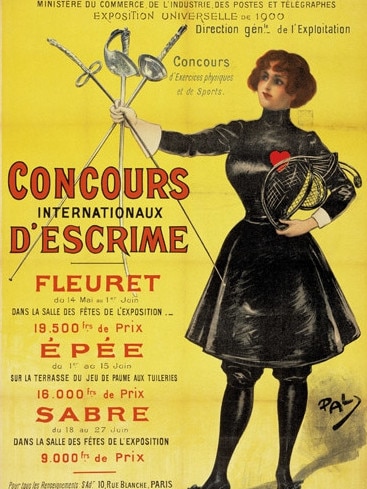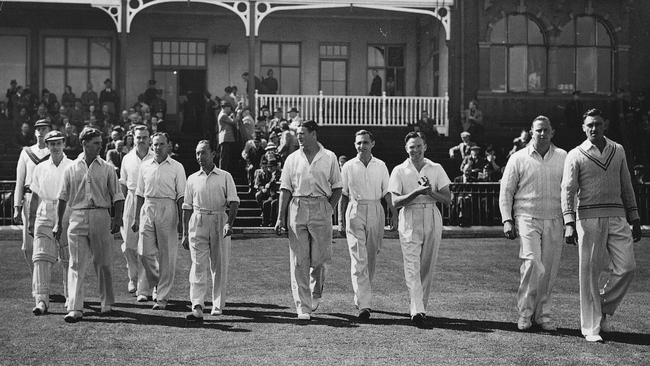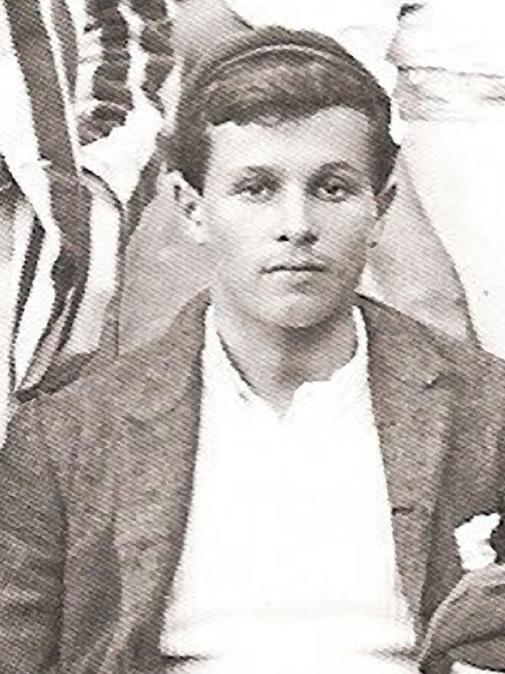In 1900 in Paris, cricket made its awkward Olympic Games debut
Sixteen of this year’s T20 World Cup matches were played in America, but cricket’s overseas adventures have been amusingly haphazard across 180 years.

Underwater swimming was an Olympic event once: at the 1900 Paris Games. The event took place on the Seine, and men swam underwater and were scored for both their time and distance. The best of them was clearly the Danish super athlete Peder Lykkeberg. Not understanding the rules or French, he swam underwater for 23 seconds longer than anyone else – but in circles. The distance was measured in a straight line, so he lost.
But that is not why the sport was dropped. No one came to watch it. What was there to see?
Those first Paris Games – only the second Olympics – were unique for other reasons. They were the longest, covering 160 days from May 21. Events had been chaotically arranged for the separate sports, and not everyone understood they had even taken part in an Olympics. The Games ran alongside that year’s Paris Expo.

The French did much better than they will this year, winning 102 medals, 27 of them gold. Mind you, of the 997 athletes that year, 720 were French.
What also was special about those second Games were the sports played that year and never again: Croquet, angling (Frenchmen swamped this competition and won everything), ballooning (French again, with one team setting a world record floating from Paris to Kyiv), motor racing (yes, the French once more, but a contest between carmakers rather than drivers), a 200m swimming obstacle race in which contestants had to swim under and climb over various hindrances, including boats (Manly’s Frederick Lane won this), and Basque pelota, a sort of early squash played by so few people only two countries competed, Spain and France. The French failed to show so Spain won.
Among the sports tested and dropped from the Games in 1900 was cricket, which will be reintroduced for the 2028 Los Angeles Games following on from the success of the T20 matches in the US this year.
And that is quite appropriate: the first international cricket match – indeed the first international sporting competition of any kind – was held in New York in 1844 pitched as United States of America versus the British Empire’s Canadian Province (Canada gained independence from Britain in 1867).

The origins of cricket are unclear, but village teams were playing each other by the 17th century, and by the first years of the 18th the first English county games were organised. Businessman Thomas Lord built a ground in 1787 and the Marylebone Cricket Club adopted that name, and the following year set out the rules for cricket including that the wickets be 22 yards apart – an awkward sounding 20.1168m in today’s money.
The first cricket played in America would be unrecognisable today. The four-a-side matches were arranged by Virginia plantation owner William Byrd III, who inherited more than 72,000 hectares, but he preferred to fight so enlisted with the British Americans in what is known as the French and Indian War that lasted nine years from 1754.
After the British, who were joined by Indian tribes including the Iroquois and Cherokee, defeated the French who had sided with Abenaki, Ottawa and Algonquin tribes, Byrd went back to the farm, gambling his way through his inheritance. The cricket games appear to have been for yet more betting.
The game gained momentum, spreading through the British American colonies before any other team sport. Which is how the St George’s Cricket Club came to be formed in New York in 1839. Local matches were arranged and played at its home ground on the corner of 60th Street and Broadway, where the Trump International Hotel sits now. (It has vacancies tonight; a modest room will set you back $1063.)


The St George’s club made contact with the Toronto Cricket Club for a proposed match but, either through confusion or some mischief, when the players turned up, having travelled by stage coach and then steamship over Lake Ontario, the home town team knew nothing of the arrangements. Nonetheless, they quickly organised a few casual matches and at one point were entertained by the band of the governor of Upper Canada, Sir George Arthur.
He not long before had been lieutenant governor of Van Diemen’s Land, shortly before it became Tasmania. Port Arthur is named after him and he planned its brutal jail. He had 260 people hanged during his term and he treated the Aboriginal population – “a treacherous race” – appallingly.
A date was set for a match in New York City. It would be a two-day encounter from September 24, 1844. Overarm bowling had yet to be legalised in the rules. Before reportedly 20,000 people, a coin was tossed and the United States chose to field. Canada batted all day. The following day was washed out. They restarted on day three, managing a total of 145 in two innings. The US scored a total of 122 runs. The prizemoney was $1000, but up to $100,000 was wagered on it.
A rematch was set for the following year and the contest became the Auty Cup, possibly the oldest international sporting trophy in the world, although due to financial troubles the matches were suspended for 17 years from 1994. These days it is back on and the US are current titleholders.
But cricket today holds a place slightly south of royal tennis in the minds of most Americans, who dismiss it as baseball on valium.
Cricket in France also has a long history, but on the two occasions when it began to flourish – the second being after it fielded a team in the 1900 Paris Olympics – it was hit for six, first by revolution and then war. It had gained enough momentum that in the spring of 1789 the Duke of Dorset, John Sackville, then ambassador to France, and a cricket player and patron, planned a tour to Paris by the MCC for friendly matches over that summer, but the Bastille was stormed on July 14 and the duke thought it best everyone go home as revolution brewed.


After the interruption of World War I, French cricket gathered renewed momentum, but the second conflict and its aftermath put paid to that. (In England, on the other hand, cricket resumed four months before VJ Day with a drawn five-match Victory Test series against an Australian Services XI captained by Lindsay Hassett. More than 93,000 attended the final match at Lord’s.)

Until 2028, the record will show that cricket – at 12 a side – was played once at the Olympics, that England was awarded the gold medal and France silver, this because Belgium and the Netherlands had pledged to field Olympic XIIs, but neither did. In any case, the sides were not nationally selected: the English were effectively a touring team called the Devon and Somerset Wanderers, only two of whom had played first-class cricket; the French team came from two local clubs mostly made up from expatriates, some of who stayed on in Paris after working on the construction of the Eiffel Tower 11 years earlier.
What was to have been a knockout competition became a single match for the medals, which the English journeymen won easily or narrowly, depending on how you look at it. They scored 117 in the first innings and France 78. The following day, England declared at 5/145, sending France in for the second time. A catastrophic top, middle and lower-order collapse unfolded, France losing 10 wickets for 11 runs.

Batsmen Philip Tomalin and John Braid (both English) tried to hold out for a draw but, with five minutes to go, Braid had a rush of blood, went for a single and was run out. England won by 158 runs. The teams received their medals and statues of the Eiffel Tower that some had helped build.
Two of the English team members migrated to Australia, with one, Alfred James Bowerman, arriving in 1912 and enlisting to fight for Australia in World War I. He joined the Australian Remount Unit, part of the Light Horse Regiments, in November 1915 and soon sailed on the recently requisitioned His Majesty’s Australian Transport Orontes to Egypt.
He returned safely to farming in Queensland and died, aged 73, in Brisbane in 1947.
Bowerman’s first-class cricket career involved two matches five years apart for Somerset. He scored eight runs and took one catch for a batting average of two and a top score of three.


Charles Beachcroft (born Charles Kay) played no first-class cricket but top-scored with 23 and 54 in France. His life innings was lively long before he arrived in Australia in 1921.
He might have been born to a Church of England vicar, but he lived unencumbered by Christian values, even though after his father’s death his mother enrolled him at an excellent school in Devon’s Newton Abbot. As a youngster he roller-skated, played hockey and rugby, and was an early adherent to the table tennis craze that swept the English upper classes at the end of the 19th century. The charismatic Beachcroft also sang and wrote and performed in amateur plays.
By 19 he was married and by the age of 26 had four children, but at that point left for London with a 17-year-old lover. He was charged with abduction and would have gone to jail but for promising he would divorce his wife and marry the girl, which he did using the name Beachcroft for the first time. The married ladies’ man ended up with 13 children by four women, with his biography appropriately titled One of Life’s Great Charmers: A biography of Charles Kay.
He ran a pub, went broke and turned to the theatre as a singer, actor and comedian. He toured around the British Isles and in 1921 came to Australia calling himself Jack Trent and performed here and in New Zealand, and towards the end of his life was on one of Melbourne’s first radio stations. He died at Melbourne’s St Vincent’s Hospital on July 1, 1928.
The Newton Abbot Museum records that he was “a serial adulterer (and) seemed to spend quite a bit of his time in court, defending against charges of poaching, gambling, bankruptcy, licensing disputes and even abduction of a minor with the intention of carnal knowledge”.
On February 22, 1922, a report appeared in the show business magazine Everyone’s announcing he was performing at Sydney Fuller’s Theatre. It breathlessly boasted that: “Jack Trent, now playing the Fuller Theatre, Sydney, hails from Devon (Eng). He is a fully qualified solicitor, and has, in a most varied career, been hotel proprietor, solicitor’s managing clerk and manufacturer. As an athlete he played cricket for his county, scoring 15 centuries, and holds four county cups, three for Devon – cricket, hockey and rugby football and one cricket for Hertfordshire … he holds the Royal Humane Society’s certificate for saving life.”
Howzat?





